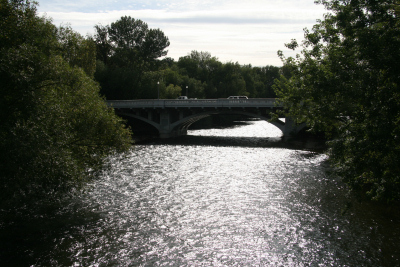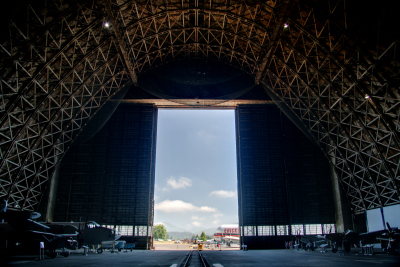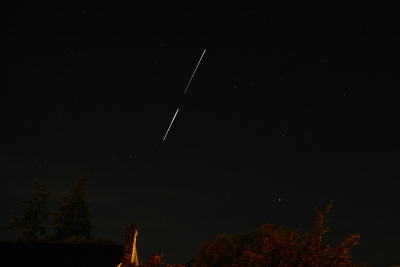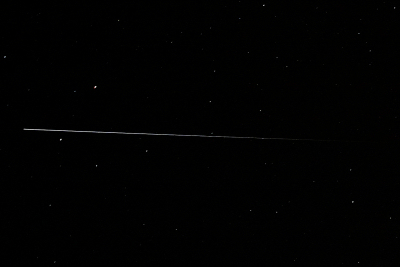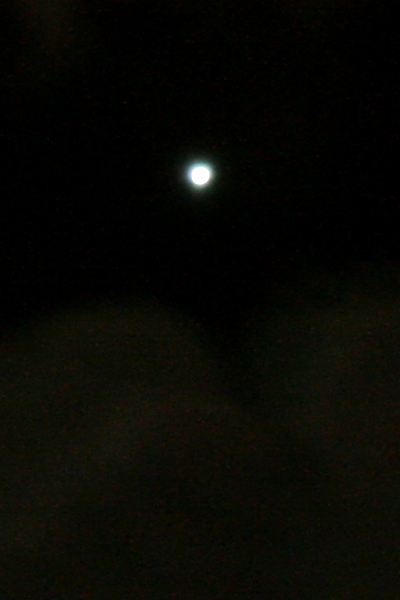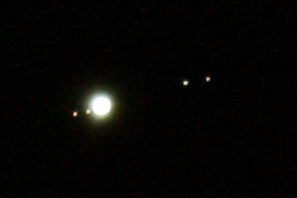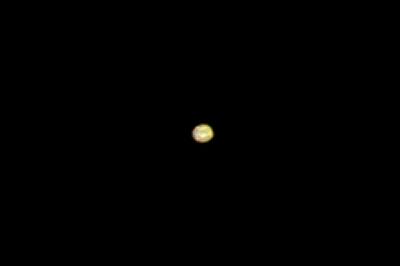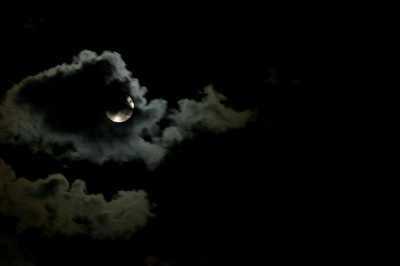
Galileo could not deny what he saw through his new telescope. These were not stars, as he had first thought when he discovered the moons of Jupiter on January 7, 1610. The little pinpoints of light, arrayed in a straight line near the large planet, moved. Stars don't do that. Even in the space of 30 minutes, one could observe changes in position relative to the planet and to each other, as I witnessed and photographed on Tuesday. (Please pardon the third shot's quality; I was shooting through a thick smoky haze.)
On January 10, 1610, Galileo observed that one of the objects disappeared behind Jupiter, then re-emerged later. He concluded that these objects must be moons orbiting Jupiter. It was a mini "solar system," in plain view of anyone who cared to observe. Eventually, Galileo even worked out their orbits and could predict when and where the Jovian moons would show up.
This was an earthshaking finding. According to http://en.wikipedia.org/wiki/Galileo: A planet with smaller planets orbiting it did not conform to the principles of Aristotelian Cosmology, which held that all heavenly bodies should circle the Earth, and many astronomers and philosophers initially refused to believe that Galileo could have discovered such a thing. His observations were confirmed by the observatory of Christopher Clavius and he received a hero's welcome when he visited Rome in 1611.
However, Galileo's "hero" status was short-lived: Galileo's championing of Copernicanism was controversial within his lifetime, when a large majority of philosophers and astronomers still subscribed (at least outwardly) to the geocentric view that the Earth is at the centre of the universe. After 1610, when he began supporting heliocentrism publicly, he met with bitter opposition from some philosophers and clerics, and two of the latter eventually denounced him to the Roman Inquisition early in 1615. Although he was cleared of any offence at that time, the Catholic Church nevertheless condemned heliocentrism as "false and contrary to Scripture" in February 1616, and Galileo was warned to abandon his support for it—which he promised to do. When he later defended his views in his most famous work, Dialogue Concerning the Two Chief World Systems, published in 1632, he was tried by the Inquisition, found "vehemently suspect of heresy," forced to recant, and spent the rest of his life under house arrest.
At issue was the belief that the Bible delares the earth to be the center of the solar system: Psalm 93:1, Psalm 96:10, and 1 Chronicles 16:30 include (depending on translation) text stating that "the world is firmly established, it cannot be moved." In the same tradition, Psalm 104:5 says, "the LORD set the earth on its foundations; it can never be moved." Further, Ecclesiastes 1:5 states that "And the sun rises and sets and returns to its place" etc.
Of course, in hindsight all Christians now understand that these passages were written from the perspective of an observer; they do not address the astronomical relationship between the sun and the earth.
A friend of mine who is a pastor in California put it well: Careful observation of the natural world can cause Christians to go back to the Bible and reexamine whether it really teaches what we have understood it to say in the past.


